It has been almost three months since our trip to Finland yet every day I am reminded of the Finnish people, their love of children, belief in education and hope for the future. I want to thank Kati Sormunen, Minna Kukkonen and Tiina Korhonen for their posts this week on PennFinn13. This prompted me to return to my journal and share jottings and lingering reflections. Observing schools earlier this spring, several themes rested between the pages of my notebook.
Back in March after leaving my Pennfinn13 colleagues in Helsinki, I headed to northern Finland with my daughter. Flying into Rovaniemi on the Arctic Circle, we were welcomed by window paintings of a fox on skis,
bears in canoes, reindeer on the airport roof and owls, Arctic tern and polar bears lounging in the center of the baggage claim area. A mannequin Santa greeted us. Clearly this is the real home of Santa Claus (Joulupukki). In town, several men looked like Santa, with a twinkle in their eyes and a long white beard, although none were dressed in a red suit.
 While in Rovaniemi I asked everyone I could about the schools. Did you go to school here? How are the schools? What did you think? Although my sample size was small (eight people) they all shared similar information.
While in Rovaniemi I asked everyone I could about the schools. Did you go to school here? How are the schools? What did you think? Although my sample size was small (eight people) they all shared similar information.
“Yes, the primary schools are very good. You go to the school nearest your home. They are small schools. When you get to the secondary school, the preparation is maybe not as strong as other schools in the south near bigger cities. Sometimes it is hard to find teachers in the rural part of the country. Very few people from Lapland are accepted into the difficult university preparation programs like the one to be a teacher.”
Two adults shared that in Rovaniemi on one side of the river immigrants live who have sought political asylum in Finland. One woman said, “My friend’s parent is the principal of that school and they have some challenges.” She did not elaborate. I spent some time looking through the Rovaniemi and Finland immigration website and discovered there are about 1400 immigrants in this northern city and about 240 arrive each year from the middle east and Africa. There are a multitude of services available. As I read I was impressed with the perspective on welcoming newcomers to a country. I began to think about the multilingual educational approach in Finland and I wondered how this translated to immigrant children in the cities.
When I read the post by Katy, Minna and Tiina about Knapp Elementary, they describe school documents that are translated into many different languages for students and their families. This got me thinking about how in Finland students take exams in various languages. Being able to communicate in your mother tongue is essential to learning.
American writer Teresa McCarty (1993) researched Navajo children where the school is working to maintain the home language and culture. She notes that, “educational, linguistic, and cultural self-determination are inextricably linked” and shows an example of a Native American school that respects the home language and uses this to teach their children, “schools have the potential to silence or give voice to identities rooted and mediated in the local language and culture… no child should be forced to accept … identity at the expense of his or her own” (McCarthy, 1993).
In Lapland, the Sami people live next to individuals who speak Finnish, Swedish and Russian. We were told that Finnish students are able to take matriculating exams in their mother tongue. Depending on where you are in Finland this may be Russian, Swedish, Finnish or Sami. I wonder how educators in Finland embrace multilingualism beyond the European languages. For immigrants to Finland, I think it will be challenging for schools to maintain current educational beliefs and practices as the country embraces a more diverse population. As all countries become a global citizenry acceptance and change will necessitate new thinking. The Finnish have it correct — where children take a test in their mother tongue. If there are immigrants who speak multiple languages, the greater the diversity of languages, the more difficult it will be to make accommodations to the various languages.
I enjoyed learning about the language, food, cultural events and resource centers of the Sami people in Lapland. Three residents with whom I spoke talked about how the small rural schools only go to a certain grade and then students on the outskirts of the city have to travel far to attend their secondary or vocational education. Some people travel from Inari to Rovaniemi. The rural nature of northern Finland poses some interesting challenges.
What do these rural schools look like? We rented a car, left Rovaniemi and travelled to a more rural part of Lapland. As we drove I stopped to take photos of Koulu (Schools) enroute. I noticed a few things. We were there over the Easter holiday break so I was only able to peek in the windows and observe the outside of the school. First, they all had outdoor hockey rinks, and outdoor ski and bike racks which were lit up at night. One had a wood fired heating plant just outside the school, similar to the ones in Vermont. In Vermont we store our skis inside the school and use them as part of our physical education class. In Finland in three rural schools I visited there were skis stored outside the school ready for their next use. Residents shared that students skied to school.
Being on the Arctic circle for a month it is totally dark so one resident explained that the lights stay on. In the spring there is a little more natural sunlight, but at dusk the lights automatically turn on, illuminating the bike racks and bike paths. Yes, they put studded tires on their bicycles, children ride to school, in the dark, in the light, in the snow, all year long,
There were winter outdoor playgrounds and igloos made by the children. A teenager shared that all children are allowed to go outside to play in the very cold, they just wear more clothing. Eric Barker, the Nordic ski coach at Mt. Mansfield Union High School has said to me many times that there is no such thing as bad weather, just bad clothing. Thinking about these schools, and the igloo, I was reminded of several times in Vermont when children are prohibited from going outside for fresh air in the winter when it is “too cold.” Perhaps in the United States we are a bit afraid of the cold. Why? I got the sense that the Finns felt they should embrace the cold as it was simply a part of life.
Whether talking about accepting and adapting to the cold weather, or accepting and adapting to a child’s mother language, as educators we must all try to move beyond what we have been taught. We must adapt to our environment and the people whom we serve in the environment. In doing so, we will find more success for our children and future generations.
Reference: McCarty, T. L. (2002). What if the children forget the Navajo language? A place to be Navajo: Rough Rock and the struggle for self-determination in indigenous schooling (pp. 179-191), Mahwah. NJ: Lawrence Erlbaum.
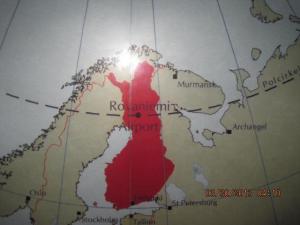

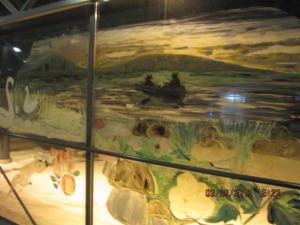
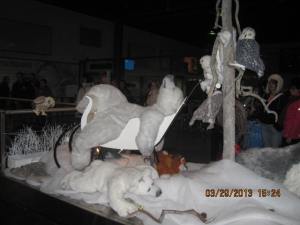
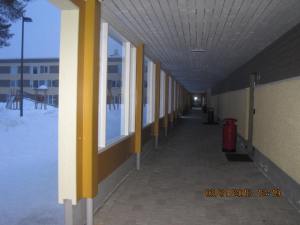

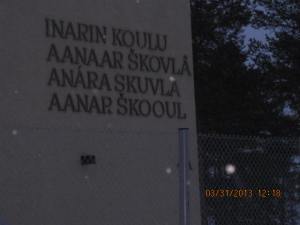
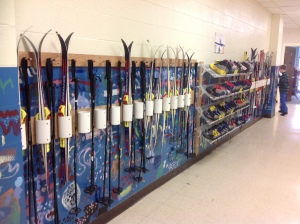
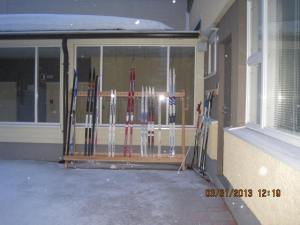
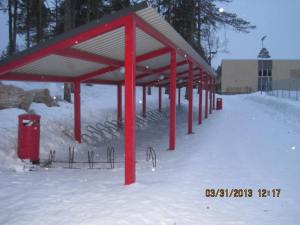
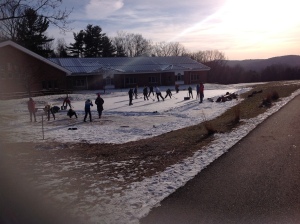
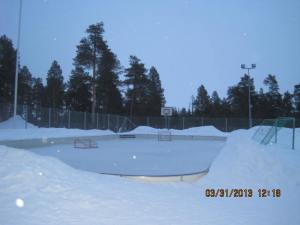

Loved the comment about children playing outside even when the weather was extremely cold as compared to children in US who,stay indoors. I totally agree that children should be outside getting rejuvenated by the fresh air….just have the right clothes as stated so,simply in your post. Great adventure…living vicariously through your words.
Yes, I think in this country we are more protective of our children, we do not let them just be children. There were so many experiences in Helsinki where I watched parents letting children just live and be youthful. Here I see parents trying to control every move their child makes. Thank you for your comments.